Shilei Liu
ECKGBench: Benchmarking Large Language Models in E-commerce Leveraging Knowledge Graph
Mar 20, 2025Abstract:Large language models (LLMs) have demonstrated their capabilities across various NLP tasks. Their potential in e-commerce is also substantial, evidenced by practical implementations such as platform search, personalized recommendations, and customer service. One primary concern associated with LLMs is their factuality (e.g., hallucination), which is urgent in e-commerce due to its significant impact on user experience and revenue. Despite some methods proposed to evaluate LLMs' factuality, issues such as lack of reliability, high consumption, and lack of domain expertise leave a gap between effective assessment in e-commerce. To bridge the evaluation gap, we propose ECKGBench, a dataset specifically designed to evaluate the capacities of LLMs in e-commerce knowledge. Specifically, we adopt a standardized workflow to automatically generate questions based on a large-scale knowledge graph, guaranteeing sufficient reliability. We employ the simple question-answering paradigm, substantially improving the evaluation efficiency by the least input and output tokens. Furthermore, we inject abundant e-commerce expertise in each evaluation stage, including human annotation, prompt design, negative sampling, and verification. Besides, we explore the LLMs' knowledge boundaries in e-commerce from a novel perspective. Through comprehensive evaluations of several advanced LLMs on ECKGBench, we provide meticulous analysis and insights into leveraging LLMs for e-commerce.
ChineseEcomQA: A Scalable E-commerce Concept Evaluation Benchmark for Large Language Models
Feb 27, 2025
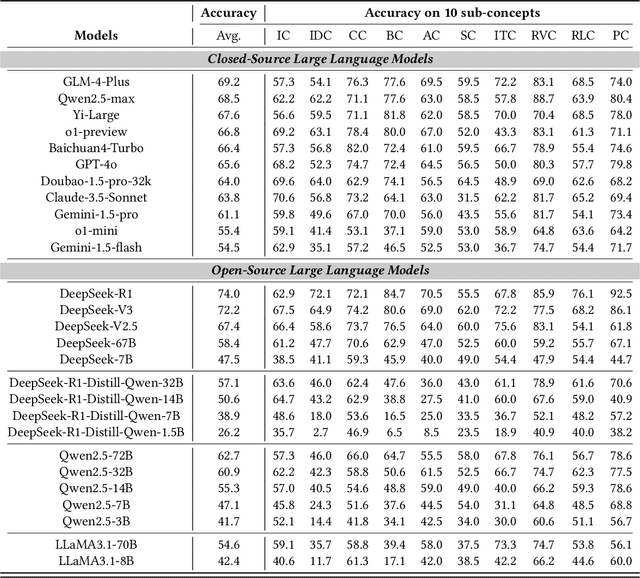
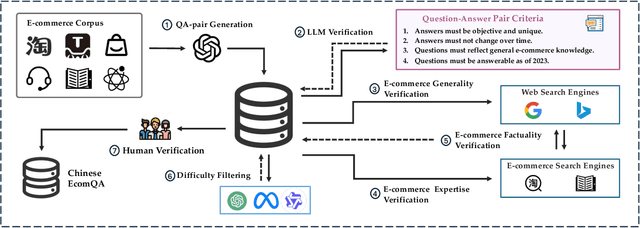

Abstract:With the increasing use of Large Language Models (LLMs) in fields such as e-commerce, domain-specific concept evaluation benchmarks are crucial for assessing their domain capabilities. Existing LLMs may generate factually incorrect information within the complex e-commerce applications. Therefore, it is necessary to build an e-commerce concept benchmark. Existing benchmarks encounter two primary challenges: (1) handle the heterogeneous and diverse nature of tasks, (2) distinguish between generality and specificity within the e-commerce field. To address these problems, we propose \textbf{ChineseEcomQA}, a scalable question-answering benchmark focused on fundamental e-commerce concepts. ChineseEcomQA is built on three core characteristics: \textbf{Focus on Fundamental Concept}, \textbf{E-commerce Generality} and \textbf{E-commerce Expertise}. Fundamental concepts are designed to be applicable across a diverse array of e-commerce tasks, thus addressing the challenge of heterogeneity and diversity. Additionally, by carefully balancing generality and specificity, ChineseEcomQA effectively differentiates between broad e-commerce concepts, allowing for precise validation of domain capabilities. We achieve this through a scalable benchmark construction process that combines LLM validation, Retrieval-Augmented Generation (RAG) validation, and rigorous manual annotation. Based on ChineseEcomQA, we conduct extensive evaluations on mainstream LLMs and provide some valuable insights. We hope that ChineseEcomQA could guide future domain-specific evaluations, and facilitate broader LLM adoption in e-commerce applications.
UQABench: Evaluating User Embedding for Prompting LLMs in Personalized Question Answering
Feb 26, 2025Abstract:Large language models (LLMs) achieve remarkable success in natural language processing (NLP). In practical scenarios like recommendations, as users increasingly seek personalized experiences, it becomes crucial to incorporate user interaction history into the context of LLMs to enhance personalization. However, from a practical utility perspective, user interactions' extensive length and noise present challenges when used directly as text prompts. A promising solution is to compress and distill interactions into compact embeddings, serving as soft prompts to assist LLMs in generating personalized responses. Although this approach brings efficiency, a critical concern emerges: Can user embeddings adequately capture valuable information and prompt LLMs? To address this concern, we propose \name, a benchmark designed to evaluate the effectiveness of user embeddings in prompting LLMs for personalization. We establish a fair and standardized evaluation process, encompassing pre-training, fine-tuning, and evaluation stages. To thoroughly evaluate user embeddings, we design three dimensions of tasks: sequence understanding, action prediction, and interest perception. These evaluation tasks cover the industry's demands in traditional recommendation tasks, such as improving prediction accuracy, and its aspirations for LLM-based methods, such as accurately understanding user interests and enhancing the user experience. We conduct extensive experiments on various state-of-the-art methods for modeling user embeddings. Additionally, we reveal the scaling laws of leveraging user embeddings to prompt LLMs. The benchmark is available online.
Unlocking Scaling Law in Industrial Recommendation Systems with a Three-step Paradigm based Large User Model
Feb 12, 2025Abstract:Recent advancements in autoregressive Large Language Models (LLMs) have achieved significant milestones, largely attributed to their scalability, often referred to as the "scaling law". Inspired by these achievements, there has been a growing interest in adapting LLMs for Recommendation Systems (RecSys) by reformulating RecSys tasks into generative problems. However, these End-to-End Generative Recommendation (E2E-GR) methods tend to prioritize idealized goals, often at the expense of the practical advantages offered by traditional Deep Learning based Recommendation Models (DLRMs) in terms of in features, architecture, and practices. This disparity between idealized goals and practical needs introduces several challenges and limitations, locking the scaling law in industrial RecSys. In this paper, we introduce a large user model (LUM) that addresses these limitations through a three-step paradigm, designed to meet the stringent requirements of industrial settings while unlocking the potential for scalable recommendations. Our extensive experimental evaluations demonstrate that LUM outperforms both state-of-the-art DLRMs and E2E-GR approaches. Notably, LUM exhibits excellent scalability, with performance improvements observed as the model scales up to 7 billion parameters. Additionally, we have successfully deployed LUM in an industrial application, where it achieved significant gains in an A/B test, further validating its effectiveness and practicality.
Advancements in 3D Lane Detection Using LiDAR Point Clouds: From Data Collection to Model Development
Sep 24, 2023



Abstract:Advanced Driver-Assistance Systems (ADAS) have successfully integrated learning-based techniques into vehicle perception and decision-making. However, their application in 3D lane detection for effective driving environment perception is hindered by the lack of comprehensive LiDAR datasets. The sparse nature of LiDAR point cloud data prevents an efficient manual annotation process. To solve this problem, we present LiSV-3DLane, a large-scale 3D lane dataset that comprises 20k frames of surround-view LiDAR point clouds with enriched semantic annotation. Unlike existing datasets confined to a frontal perspective, LiSV-3DLane provides a full 360-degree spatial panorama around the ego vehicle, capturing complex lane patterns in both urban and highway environments. We leverage the geometric traits of lane lines and the intrinsic spatial attributes of LiDAR data to design a simple yet effective automatic annotation pipeline for generating finer lane labels. To propel future research, we propose a novel LiDAR-based 3D lane detection model, LiLaDet, incorporating the spatial geometry learning of the LiDAR point cloud into Bird's Eye View (BEV) based lane identification. Experimental results indicate that LiLaDet outperforms existing camera- and LiDAR-based approaches in the 3D lane detection task on the K-Lane dataset and our LiSV-3DLane.
Binaural Rendering of Ambisonic Signals by Neural Networks
Nov 04, 2022



Abstract:Binaural rendering of ambisonic signals is of broad interest to virtual reality and immersive media. Conventional methods often require manually measured Head-Related Transfer Functions (HRTFs). To address this issue, we collect a paired ambisonic-binaural dataset and propose a deep learning framework in an end-to-end manner. Experimental results show that neural networks outperform the conventional method in objective metrics and achieve comparable subjective metrics. To validate the proposed framework, we experimentally explore different settings of the input features, model structures, output features, and loss functions. Our proposed system achieves an SDR of 7.32 and MOSs of 3.83, 3.58, 3.87, 3.58 in quality, timbre, localization, and immersion dimensions.
An Understanding-Oriented Robust Machine Reading Comprehension Model
Jul 01, 2022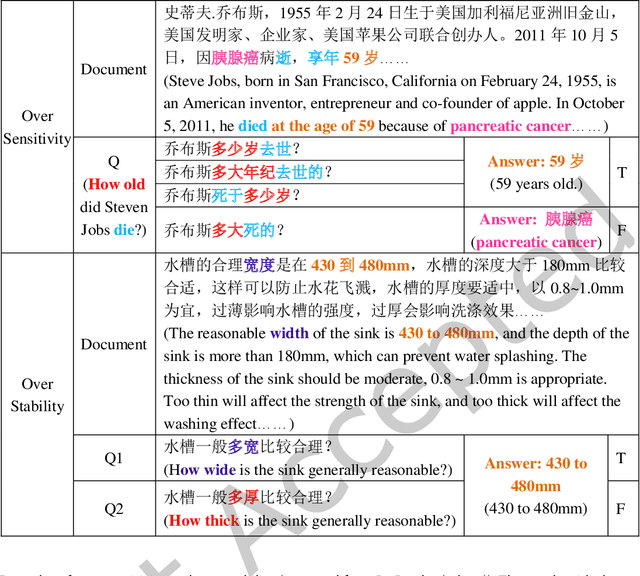
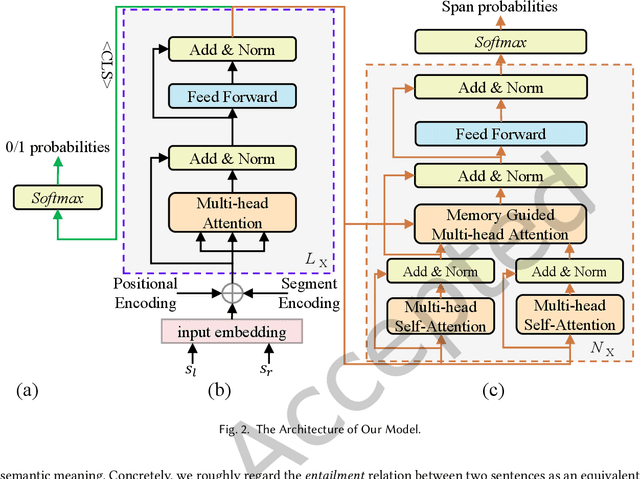
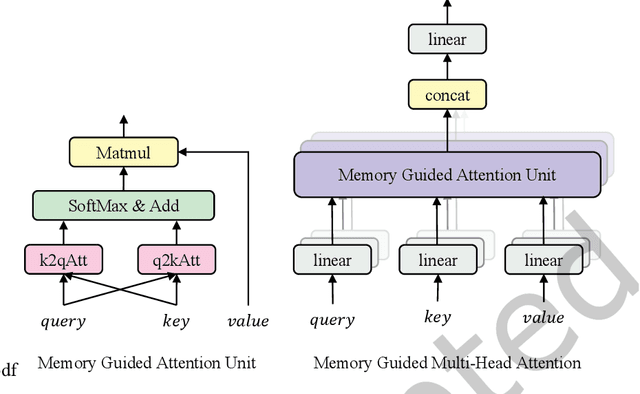

Abstract:Although existing machine reading comprehension models are making rapid progress on many datasets, they are far from robust. In this paper, we propose an understanding-oriented machine reading comprehension model to address three kinds of robustness issues, which are over sensitivity, over stability and generalization. Specifically, we first use a natural language inference module to help the model understand the accurate semantic meanings of input questions so as to address the issues of over sensitivity and over stability. Then in the machine reading comprehension module, we propose a memory-guided multi-head attention method that can further well understand the semantic meanings of input questions and passages. Third, we propose a multilanguage learning mechanism to address the issue of generalization. Finally, these modules are integrated with a multi-task learning based method. We evaluate our model on three benchmark datasets that are designed to measure models robustness, including DuReader (robust) and two SQuAD-related datasets. Extensive experiments show that our model can well address the mentioned three kinds of robustness issues. And it achieves much better results than the compared state-of-the-art models on all these datasets under different evaluation metrics, even under some extreme and unfair evaluations. The source code of our work is available at: https://github.com/neukg/RobustMRC.
Deep Understanding based Multi-Document Machine Reading Comprehension
Feb 25, 2022
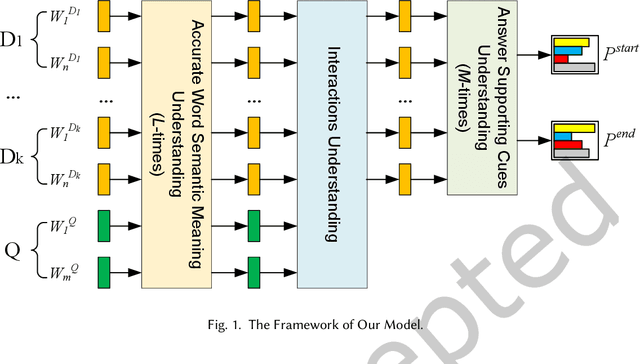

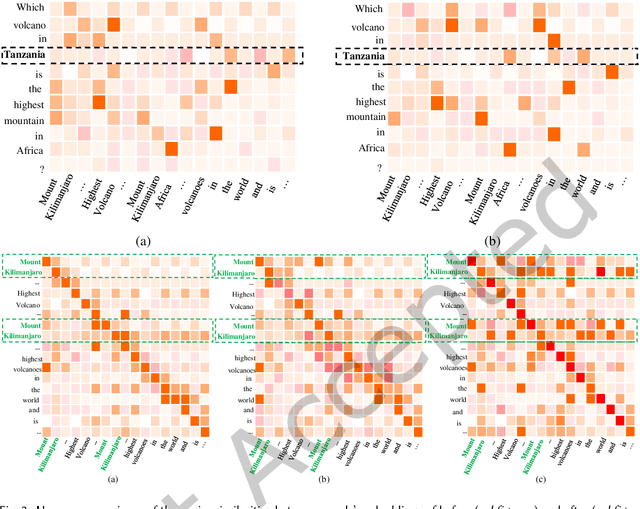
Abstract:Most existing multi-document machine reading comprehension models mainly focus on understanding the interactions between the input question and documents, but ignore following two kinds of understandings. First, to understand the semantic meaning of words in the input question and documents from the perspective of each other. Second, to understand the supporting cues for a correct answer from the perspective of intra-document and inter-documents. Ignoring these two kinds of important understandings would make the models oversee some important information that may be helpful for inding correct answers. To overcome this deiciency, we propose a deep understanding based model for multi-document machine reading comprehension. It has three cascaded deep understanding modules which are designed to understand the accurate semantic meaning of words, the interactions between the input question and documents, and the supporting cues for the correct answer. We evaluate our model on two large scale benchmark datasets, namely TriviaQA Web and DuReader. Extensive experiments show that our model achieves state-of-the-art results on both datasets.
A Simple but Effective Bidirectional Framework for Relational Triple Extraction
Jan 05, 2022
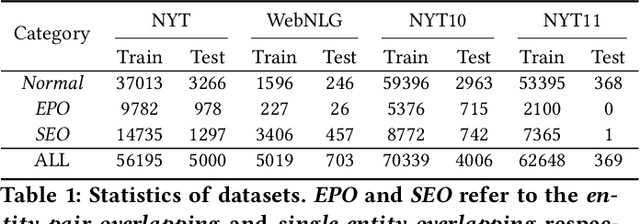
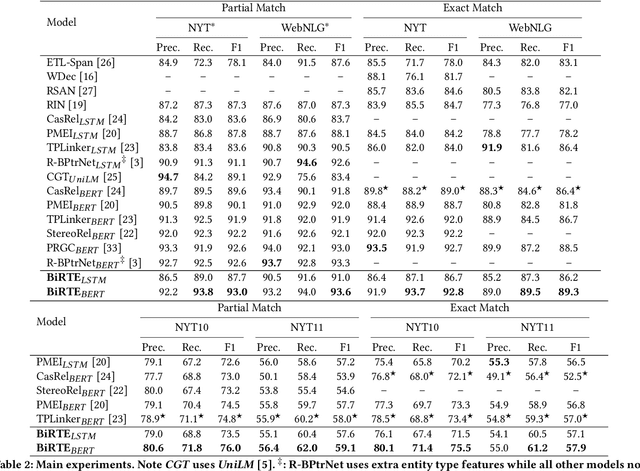

Abstract:Tagging based relational triple extraction methods are attracting growing research attention recently. However, most of these methods take a unidirectional extraction framework that first extracts all subjects and then extracts objects and relations simultaneously based on the subjects extracted. This framework has an obvious deficiency that it is too sensitive to the extraction results of subjects. To overcome this deficiency, we propose a bidirectional extraction framework based method that extracts triples based on the entity pairs extracted from two complementary directions. Concretely, we first extract all possible subject-object pairs from two paralleled directions. These two extraction directions are connected by a shared encoder component, thus the extraction features from one direction can flow to another direction and vice versa. By this way, the extractions of two directions can boost and complement each other. Next, we assign all possible relations for each entity pair by a biaffine model. During training, we observe that the share structure will lead to a convergence rate inconsistency issue which is harmful to performance. So we propose a share-aware learning mechanism to address it. We evaluate the proposed model on multiple benchmark datasets. Extensive experimental results show that the proposed model is very effective and it achieves state-of-the-art results on all of these datasets. Moreover, experiments show that both the proposed bidirectional extraction framework and the share-aware learning mechanism have good adaptability and can be used to improve the performance of other tagging based methods. The source code of our work is available at: https://github.com/neukg/BiRTE.
A Novel Global Feature-Oriented Relational Triple Extraction Model based on Table Filling
Sep 14, 2021Abstract:Table filling based relational triple extraction methods are attracting growing research interests due to their promising performance and their abilities on extracting triples from complex sentences. However, this kind of methods are far from their full potential because most of them only focus on using local features but ignore the global associations of relations and of token pairs, which increases the possibility of overlooking some important information during triple extraction. To overcome this deficiency, we propose a global feature-oriented triple extraction model that makes full use of the mentioned two kinds of global associations. Specifically, we first generate a table feature for each relation. Then two kinds of global associations are mined from the generated table features. Next, the mined global associations are integrated into the table feature of each relation. This "generate-mine-integrate" process is performed multiple times so that the table feature of each relation is refined step by step. Finally, each relation's table is filled based on its refined table feature, and all triples linked to this relation are extracted based on its filled table. We evaluate the proposed model on three benchmark datasets. Experimental results show our model is effective and it achieves state-of-the-art results on all of these datasets. The source code of our work is available at: https://github.com/neukg/GRTE.
 Add to Chrome
Add to Chrome Add to Firefox
Add to Firefox Add to Edge
Add to Edge